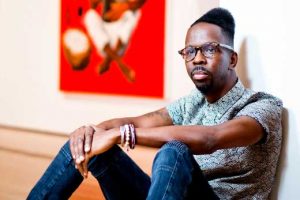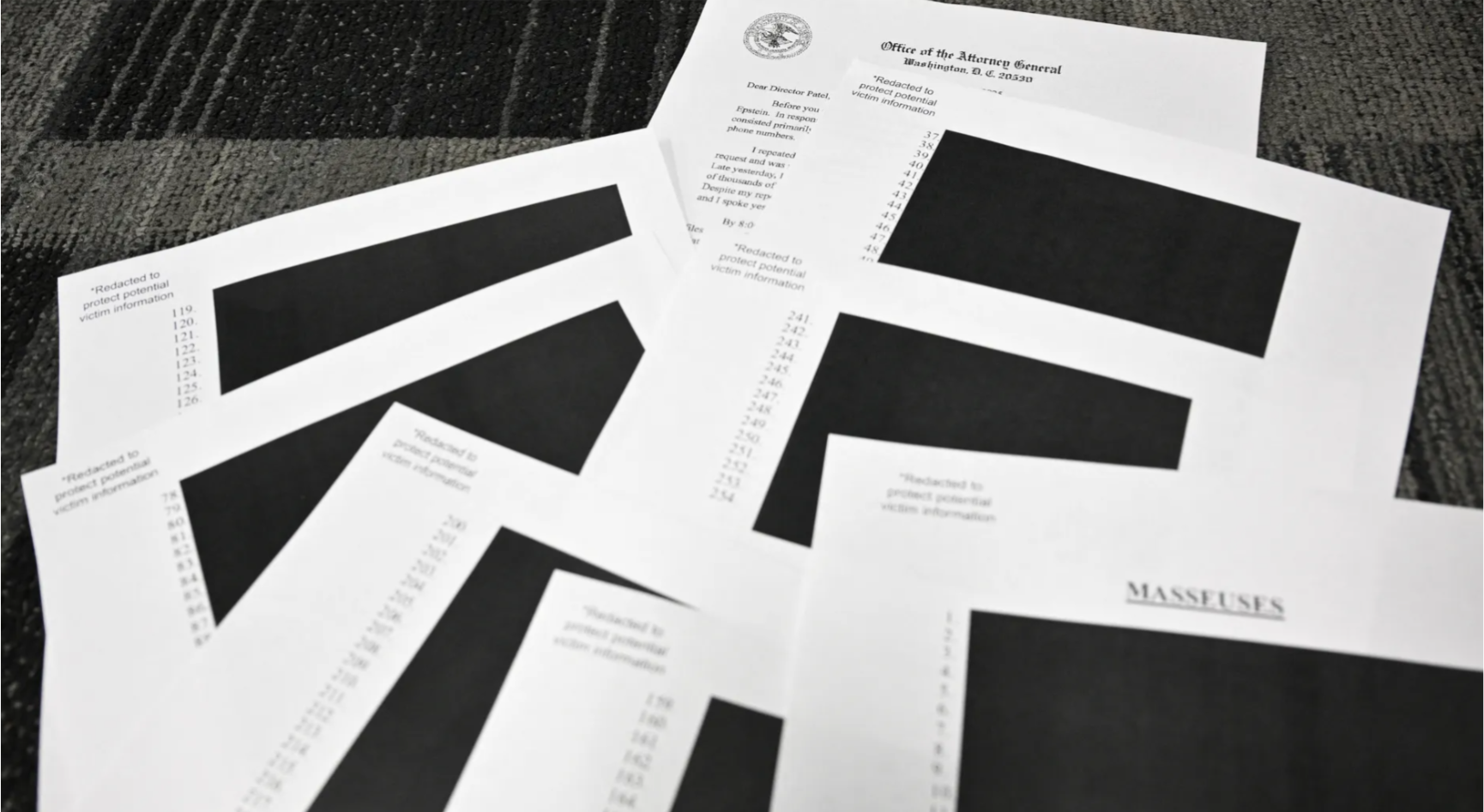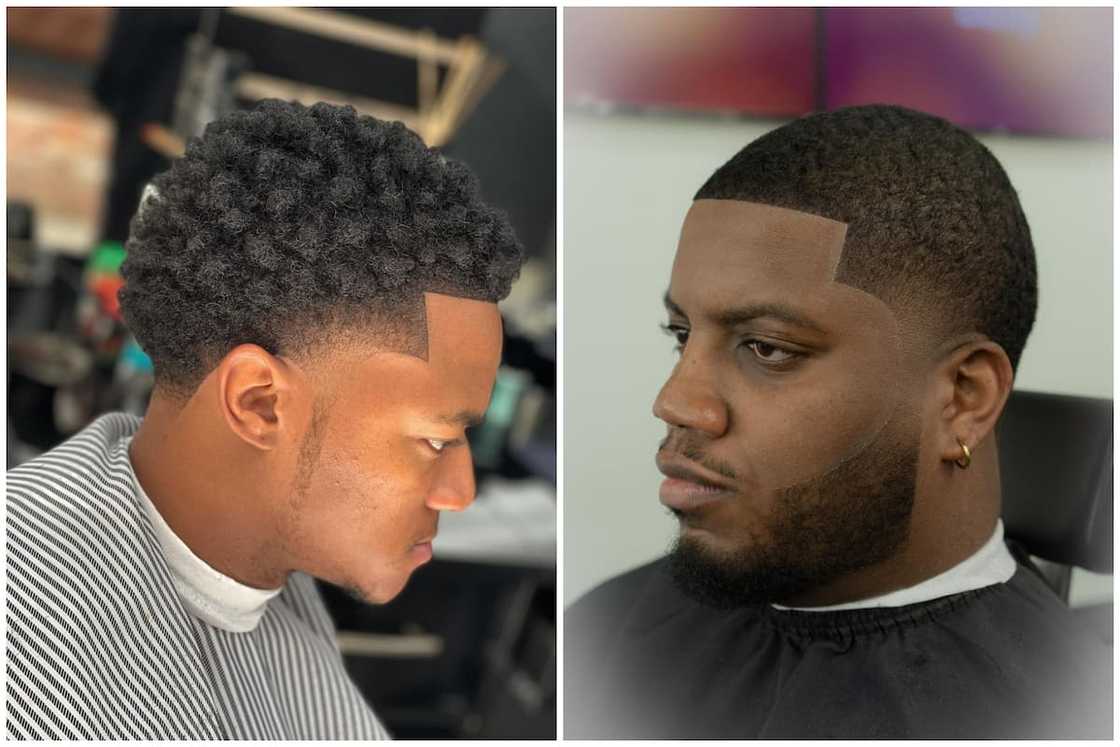(ThyBlackMan.com) Living while Black can be a challenge for Black people. It can be ominous negotiations for Black men and young boys in particular. For this reason, interdisciplinary artist and scholar Dr. Fahamu Pecou has made it his life’s work to critique prevailing misconceptions of Black identity, by untangling the visible and invisible threads that currently make up our collective understanding of Black identity. Pecou does this by maintaining an active exhibition schedule as well as informative speaking engagements at colleges, universities, and museums nationwide and abroad. Pecou’s paintings, performance art, public lectures, and academic writings address concerns around contemporary re-presentations of Black masculinity and how these images impact readings of male Blackness. I first came across the artist at an exhibition at the Conduit Gallery in Dallas, Texas. Pecou’s work was immediately impactful, refreshing and soothing at once. A t-shirt with the announcement, “Fahamu Pecou is the sh¡t” instantly grabbed my attention. At that moment, I knew had come across an artist with an engaging, unique, and interesting voice. I have followed his work every since that encounter.
Pecou began his career experimenting with branding strategies used by those in the hip hop entertainment industry to not only question stereotypes presented by the commodification of hip hop culture, but to interrogate how those influences inform historic and social configurations of race, class, and gender. Pecou earned a BFA in 1997 from the Atlanta College of Arts, and completed his PhD in philosophy at Emory University in Atlanta, Georgia. His paintings juxtaposes a hip hop street savvy and bravado with the more conservative art world.  His works often depict the spirit of Black America and the history and culture of the African diaspora by incorporating different expressions of Blackness to include visual iconography presentations of Yoruba spirituality within the context of Ifa – a diasporic religion of southwest Nigeria where spirits are believed to be infinite and offer an alternative healing of existence for slain Black men and their communities. Ifa is also, “the somatic attitude and philosophy of the negritude movement. His exhibition “All That Glitters Ain’t Goals,” is an integration of the trapping of hip hop culture that “shifts through rap music and mass media to provide a visual reference that exaggerates and calls into question the persona and “hype” upon an entire segment of today’s society who measures their worth on ideals and images of fame and wealth that contrast sharply with the realities faced by most Black youth in the early 2010s.”
His works often depict the spirit of Black America and the history and culture of the African diaspora by incorporating different expressions of Blackness to include visual iconography presentations of Yoruba spirituality within the context of Ifa – a diasporic religion of southwest Nigeria where spirits are believed to be infinite and offer an alternative healing of existence for slain Black men and their communities. Ifa is also, “the somatic attitude and philosophy of the negritude movement. His exhibition “All That Glitters Ain’t Goals,” is an integration of the trapping of hip hop culture that “shifts through rap music and mass media to provide a visual reference that exaggerates and calls into question the persona and “hype” upon an entire segment of today’s society who measures their worth on ideals and images of fame and wealth that contrast sharply with the realities faced by most Black youth in the early 2010s.”
According to Pecou, “My art raises questions about the types of images and representations that come to inform contemporary readings and performances of Black male masculinity by engaging with various stereotypes and misconceptions about Black men – both those imposed and those assumed.”Other notable exhibitions include: Pursuit of Happiness (2013), I Know Why the Caged Bird Blings (2014), Real Negus Don’t Die, Trapmedia, Talking Drum, and the Pursuit of Happiness. My personal favorite would have to be “Grav-i-ty.”
In Grav-i-ty, Pecou explores the fashion trend of saggin’ by asserting that the fashion statement as a politicized act of resistance and visibility. Saggin’ seems to confront “hegemonic reading of acceptability and decency – readings he suggests that often alienate and overlook Blackness by confronting prevailing ideas of respectability. Grav-i-ty also addresses the intersections where young Black men find their realities, sensibilities, and self-expression diminished, effectively rendering them invisible. Saggin’ then can be seen as an act of resistance and also a demand to be seen. The irony appears to be the resulting attempt at autonomy marks the wearer with the weight and burden of negative stereotypes of Black male imagery.
The exhibition raises important questions of mobility and agency and troubles dominant ideologies around respectability. “As a society, we often give up on Black boys before we’ve ever give them a chance. We meet them with fear and loathing. We limit their potential and stories of their impending death. . But what if we resisted these ideas of gravity? What if we believed in Black boys instead of belittling them? Could they, would they fly?” Pecou asks. The series also reflects talk surrounding how young Black men express themselves. Pecou states that Grav-i-ty has a double meaning: one of the actual physical concept of gravity, but also the idea of something serious or even grave, or being trapped and weighed down by struggles to overcome the various obstacles of trying to negotiate their Black bodies in often unwelcoming (white) spaces. Another favorites is one of Pecou’s more recent exhibitions, “Of Crowns and Kings.”
“Of Crowns and Kings” “centers the ritual, majesty, and sanctity of Black men and their hair. Traditional hairstyles were more than fashion, but served to symbolize and signify social status and position among other things. In recent months, controversies around Black hair expression have garnered headlines from legislaton passed to prevent discrimination to school systems banning certain looks. This collection of paintings, drawings, and site-specific installations (what I would call postmodern sculpture) juxtapose the past and present to examine the way Black men (and women) hair continues to evolve and expand our ways of seeing. The exhibition “Memory” speaks to a conscious nonlinear step into all periods and styles of Black representation. This series is a shift away from Western notions of Black identity and a look towards a decidedly Black aesthetic through an unfiltered lens and fresh perspective which, in my view, disregards concerns on the “white gaze,” and looks towards a decidedly Black aesthetic – envisioning a fresh perspective on Black identity: past, present, and future. Blackness unbound, if you well. In my opinion, not since Jean-Michel Basquait has an artist challenged the societal norms of Black expression through visual art.
Staff Writer; Gustavus Betts
One may connect with this brother on Facebook; G. Betts and Twitter; Gustavusb.

















Leave a Reply